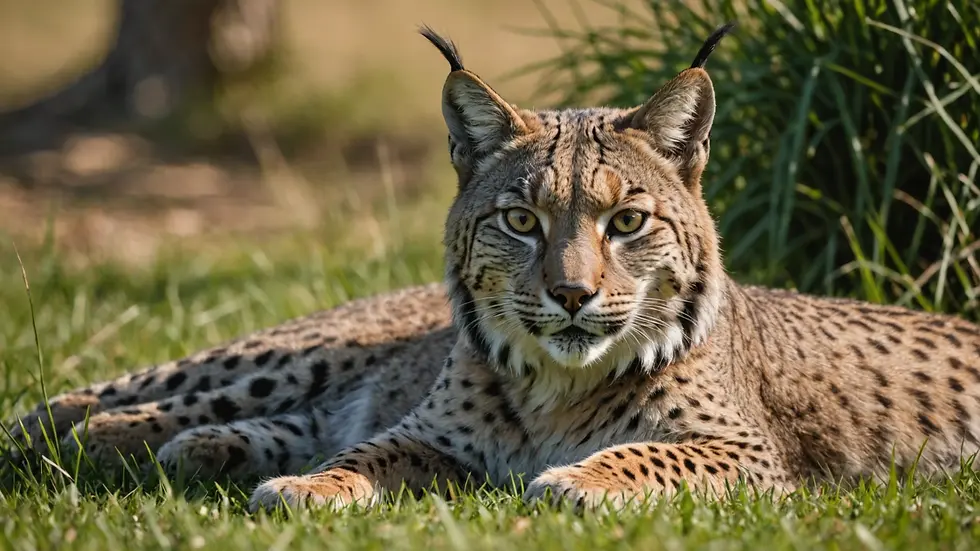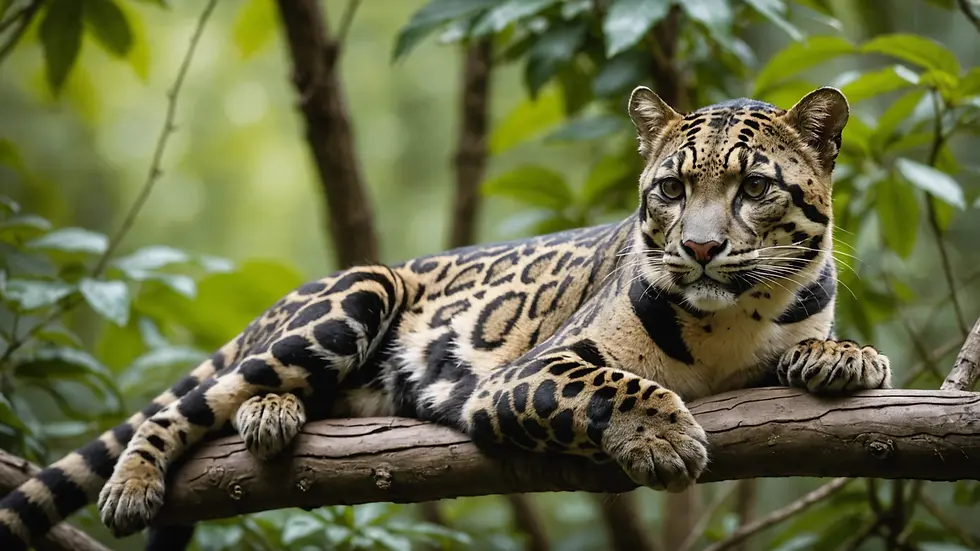Uncover the Hidden World of The Rarest Wild Cat Species: A Journey into the Unknown
- Jyotiraj Borah
- Feb 5
- 4 min read
Wild cats hold an extraordinary charm that captivates wildlife lovers around the world. From the thunderous roars of lions to the stealthy movements of leopards, these magnificent creatures draw our attention. However, some of the rarest wild cats are far removed from the spotlight, perched on the brink of extinction and in desperate need of our protection and understanding. Join us on this fascinating journey as we uncover the lives, habitats, and conservation challenges facing these elusive felines.
The Importance of Biodiversity
Before we explore rare wild cat species, understanding biodiversity is crucial. Biodiversity boosts ecosystem productivity and stability, providing vital benefits such as clean air, water purification, and plant pollination. For example, diverse animal populations can enhance soil quality and increase crop yields by promoting pollination processes. Protecting rare species is not just about appreciating their beauty; it's about preserving the health of entire ecosystems.
Let’s now delve into the hidden world of the rarest wild cat species on our planet.
1. The Iberian Lynx: The World’s Most Endangered Cat
The Heart of Spain’s Ecosystem

The Iberian lynx (Lynx pardinus) is critically endangered and inhabits the Iberian Peninsula, mainly in Spain and Portugal. Recognizable by its tufted ears and striking facial patterns, these adaptations enhance its hearing and eyesight.
Historically, the Iberian lynx roamed extensively across Europe, but habitat destruction and a decline in its primary prey, the European rabbit, have led to drastic population declines. Conservation efforts in the last two decades have included habitat restoration and boosting rabbit populations. Recent statistics reveal that there are now over 400 Iberian lynxes in the wild, a significant improvement from critically low numbers a few years ago.
Habitat and Conservation Efforts
The Iberian lynx thrives in open forests and shrublands, relying on dense vegetation for ambushing prey. Key conservation strategies include establishing protected areas and breeding programs. Despite these efforts, habitat loss remains a pressing threat due to urban expansion and agricultural practices. Conservationists stress the need to protect habitats and maintain genetic diversity to ensure the species' long-term survival.
2. The Amur Leopard: An Elusive Ghost of the Forest
The Rarity of the Amur Leopard
The Amur leopard (Panthera pardus orientalis) is critically endangered, with an estimated population of only about 100 individuals. It ranks as one of the rarest big cats in the world.
Native to the temperate forests of the Russian Far East and Northeast China, the Amur leopard is known for its thick coat, which helps it survive harsh winters. Unfortunately, its natural habitat is fragmented due to logging, agriculture, and urban development.

Threats and Conservation Strategies
Habitat loss and poaching are the primary threats to the Amur leopard’s survival. Illegal logging reduces their habitat, and poaching affects both leopards and their prey, including roe deer and hares.
Collaborative efforts between conservation organizations, local governments, and communities focus on raising awareness about this elusive species. Significant strides have been made with anti-poaching initiatives and the creation of protected areas, leading to a slight increase in population numbers. Continuous monitoring and research are essential for adapting conservation strategies to the Amur leopard's evolving challenges.
3. The Sunda Clouded Leopard: The Tree Dweller of Southeast Asia
A Unique Adaptation
The Sunda clouded leopard (Neofelis diardi) is often overlooked, yet it plays a vital role in the rainforests of Southeast Asia. This wild cat, distinguished by its unique cloud-like coat patterns, has adapted for life in the trees.
With longer limbs and flexible bodies, Sunda clouded leopards are adept climbers. They hunt various species, including birds, monkeys, and small mammals, showcasing impressive versatility.

Conservation and Preservation Efforts
The Sunda clouded leopard faces significant threats, particularly from habitat loss driven by deforestation and palm oil plantation expansion. With an estimated 2,500 to 10,000 individuals remaining, it is classified as Vulnerable on the IUCN Red List.
Effective conservation initiatives focus on habitat protection and community involvement. Promoting sustainable practices can help alleviate habitat destruction. Wildlife corridors are also being developed to maintain population connections, enhancing genetic diversity and reducing the risk of inbreeding.
4. The Rusty-Spotted Cat: Tiny but Mighty
Meet the Smallest Wild Cat
Weighing just 3 to 5 pounds, the rusty-spotted cat (Prionailurus rubiginosus) is the smallest wild cat species in the world. Found in the forests of India and Sri Lanka, their rusty coat with dark spots allows them to blend perfectly into their surroundings.
Tiny though they are, rusty-spotted cats are effective hunters, mainly preying on birds, rodents, and insects with agility comparable to larger felines.
Advocating for Their Protection
The rusty-spotted cat is classified as Endangered due to habitat loss and poaching. Their habitats, including dense woodlands and grasslands, are increasingly threatened by agricultural expansion.
Increasing community awareness and education about the ecological importance of these cats is vital. By emphasizing the need to protect forests and reduce hunting pressures, conservation efforts aim to enhance the chances of this rare feline’s survival.
Embracing Our Responsibility
The world of rare wild cats is a rich tapestry of mystery and beauty that requires our collective commitment to ensure these incredible creatures endure for future generations. Each species, whether the Iberian lynx or the rusty-spotted cat, is essential to its ecosystem, and their loss would carry significant consequences.
Through ongoing conservation endeavors, habitat protection, and community engagement, we can create an environment where these cats flourish. The journey to understand these wild cats is ever-evolving, and through awareness and action, we can support their legacy.
Together, let us pledge to protect our planet's biodiversity, advocating not just for wild cats, but for all species that share our home. The fate of these rare wild cats lies in our hands, and embracing this responsibility is crucial.




Comments